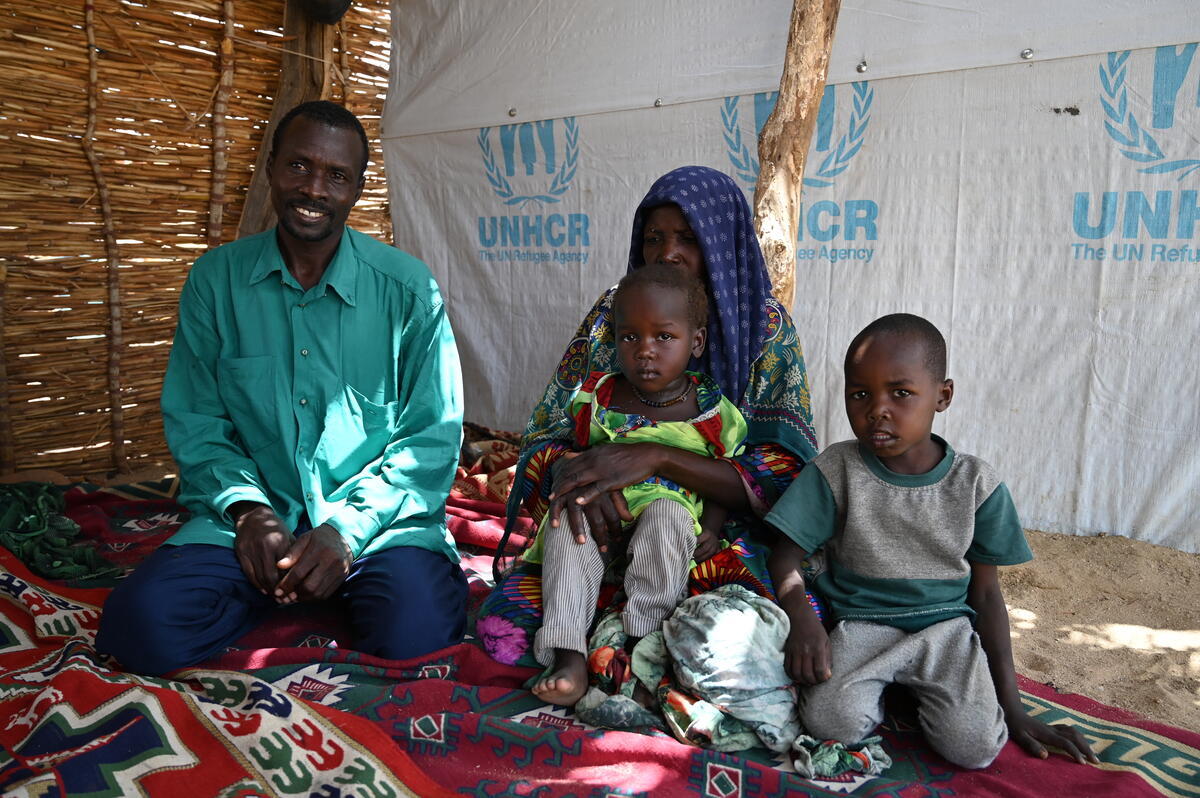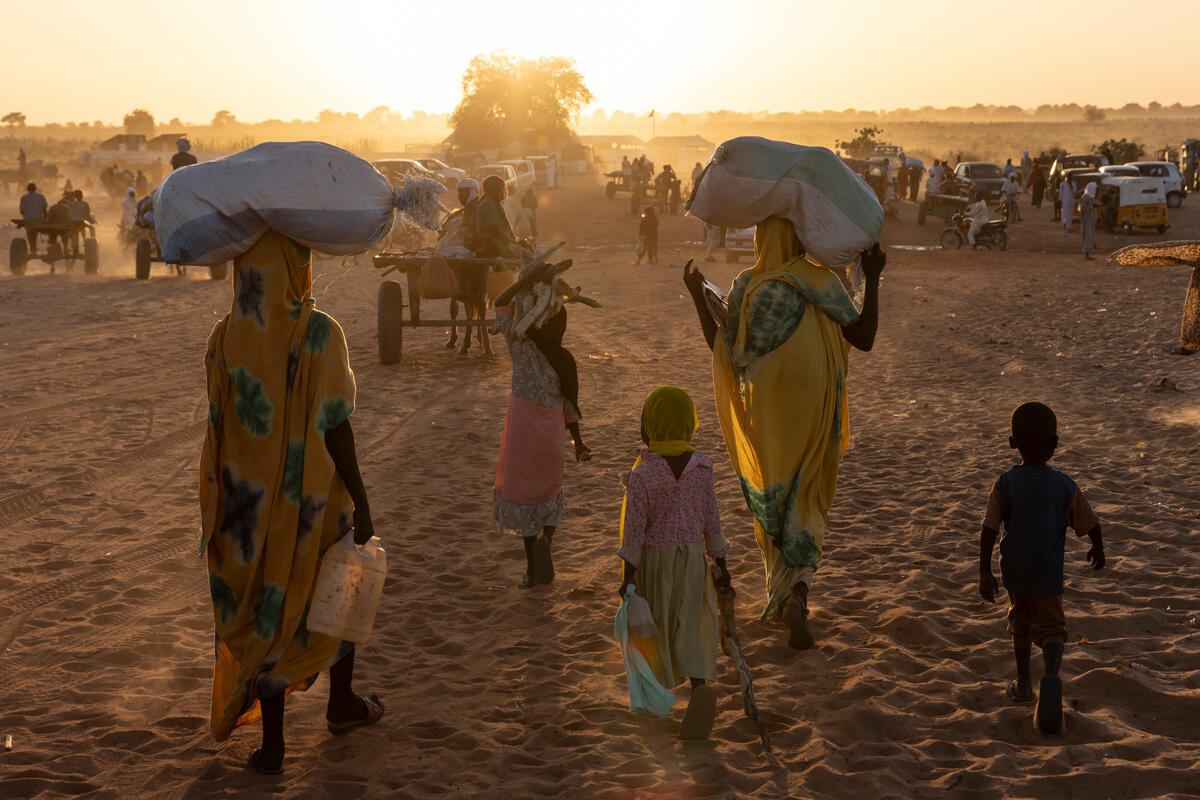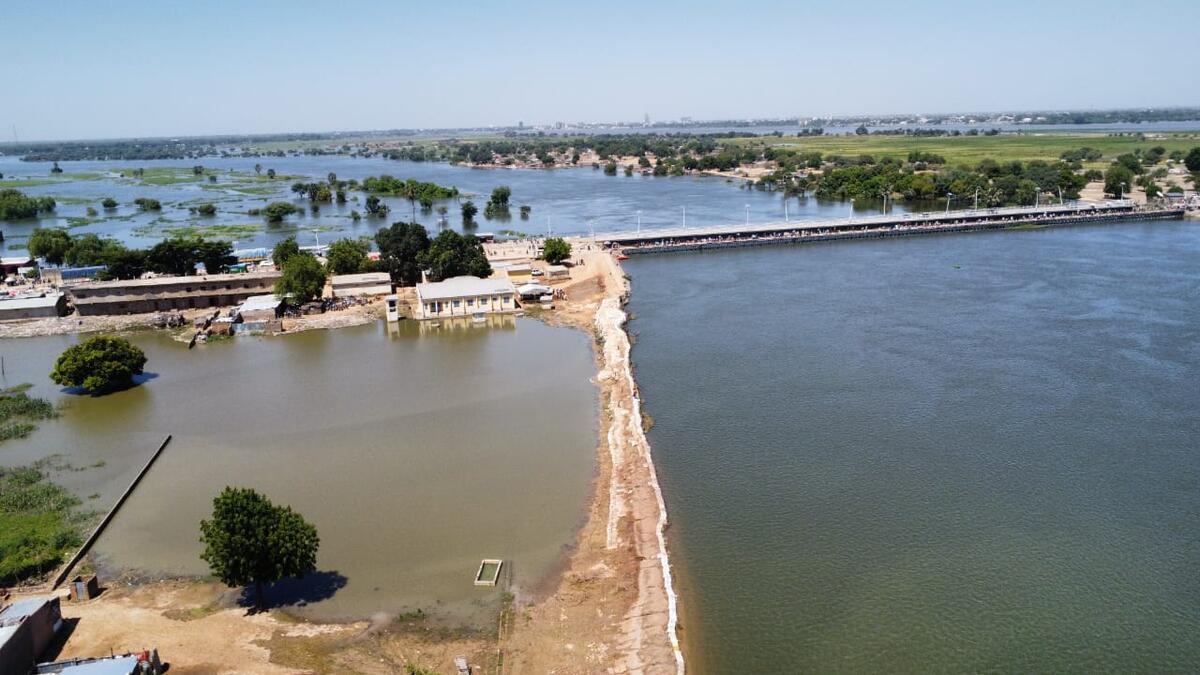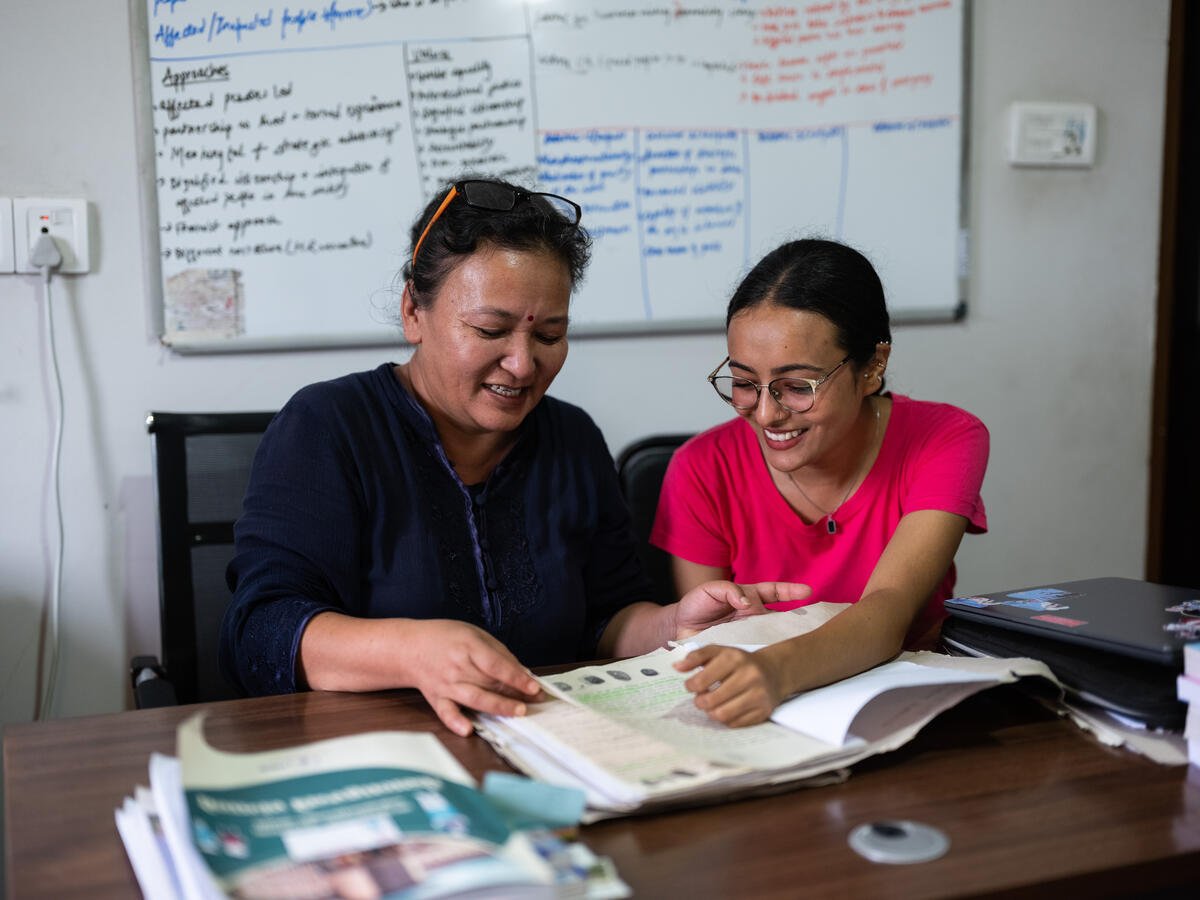Nepal/Chad: Refugee camps start to rise from the ashes
Nepal/Chad: Refugee camps start to rise from the ashes
UNHCR is rebuilding Goldhap camp in eastern Nepal after a fire last month left nearly 8,000 refugees from Bhutan homeless in the camp. Once completed, it will feature fire-retardant thatched roofs and wider spacing between huts to minimize fire hazards.
The blaze in early March was sparked by an oil lamp in a centrally located hut in Goldhap camp. It spread quickly through the dense network of huts, some of which had recently been built into the walkways to accommodate the growing refugee population. Nearly 95 per cent of the camp was destroyed, but fortunately no one was killed.
For the last eight weeks, the refugees have been living in temporary shelters and with host families in and around the camp. The most vulnerable ones live in the camp school that survived the blaze. The Nepali government, UNHCR and its partners (including the Lutheran World Foundation, Caritas and the Association of Medical Doctors of Asia), together with the World Food Programme and other aid agencies have been distributing food, tarpaulins, plastic mats, jerry cans, mosquito nets and emergency cash grants to these refugees.
To prevent the spread of diseases, we have brought in health workers, installed water tanks and latrines, dug waste disposal pits, conducted sanitation awareness activities, and carried out ultra-low-level anti-mosquito fogging around the temporary shelters.
Life is slowly returning to normal for Goldhap's refugees. UNHCR made copies of school notes for students who had lost them in the fire. Refugees who had to take their annual exams were moved to other camps and hosted there until their exams were over.
The longer-term reconstruction of Goldhap camp was delayed as the Camp Management Committee (CMC) did not agree on the roofing material. It had requested for expensive sandwich panels which were not available in the local market and did not address fire hazards. UNHCR and the government are trying to resolve the issue by having partners demonstrate how to build fire-retardant roofs with thatch.
The reconstruction is expected to be completed by June, before the monsoon rains start in July.
UNHCR and its partners have received some US$177,000 to rebuild Goldhap camp, but still need an additional US$407,509 to complete the job. More than 107,000 refugees from Bhutan have been living in seven camps in eastern Nepal since the early 1990s.
Meanwhile, in eastern Chad's Goz Amer refugee camp, work is underway on rebuilding after an 11 April blaze that left over 2,100 Sudanese refugees from the Darfur region homeless. Some 270 family huts were destroyed in the blaze, started by an untended cooking fire. We are encouraging refugees to rebuild their homes with bricks instead of using the traditional straw, stick and mud materials popular in that region. In the meantime, the affected families have been accommodated in UNHCR family tents.
The main challenge to brick construction is the severe lack of water in eastern Chad. Refugees need to use the little water available as potable water and are reluctant to waste it. Therefore, we have urged them to only use water from a nearby wadi (seasonal stream) for brick construction, while water provided in the camp by us should be used for drinking and cooking purposes.
In a display of refugee solidarity, refugees this week in Djabal camp, near the town of Goz Beida, conducted a voluntary food collection for the affected families in Goz Amer. Goz Amer is about 45 km south-east of Goz Beida.








